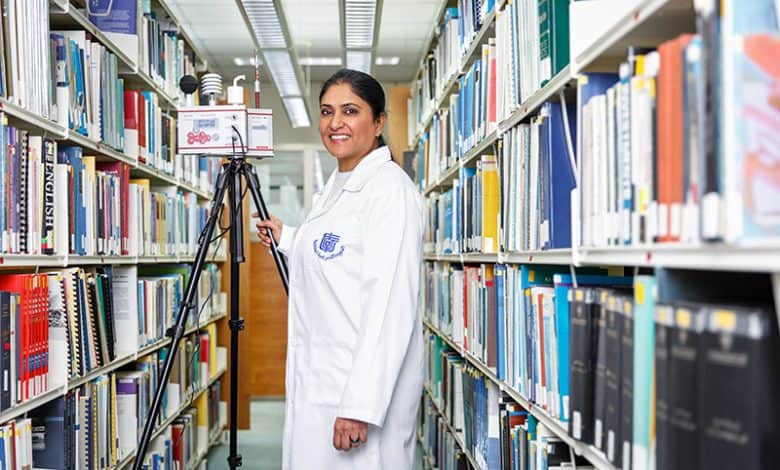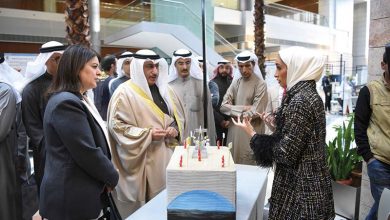Energy Efficiency; Making the Most out of Renewable Energy Solutions

Fotouh AlRagom is a published and notable mechanical engineer and an avid researcher in the field of energy efficiency. AlRagom received a bachelor’s, master’s, and a doctorate in mechanical engineering throughout her career, as well as a master’s degree in aerospace engineering. Her doctorate dissertation, centered around experimental research on green hydrogen production, was conducted with the assistance of a student research grant from the Kuwait Foundation for the Advancement of Sciences (KFAS). The completed research also won her the Best Research Student award in her field at the University of Florida. She has been working as a research scientist in the Environment and Urban Development Division at the Kuwait Institute for Scientific Research since 1990 and is now heading their Energy Efficiency Technologies program.
AlRagom’s journey started when she was a high school student attending a summer training course on solar energy. She developed an interest for it and learned that a mechanical engineering degree was needed to follow that path. Speaking about a time when the pursuit of a mechanical engineering degree was uncommon for other young women, she said, “I’m glad that my family supported that decision . . . I would walk into classrooms where I was the only woman in that course.”
According to AlRagom, the profession has been male dominated for a such a long period of time due to the misconception surrounding the nature and scope of the field.
When talking about the impact of research on energy efficiency, AlRagom explained that it is mostly overshadowed by the interest surrounding renewable energy because it is perceived as the solution to global warming. She argues that without energy efficiency, it would be difficult to achieve the best capabilities of renewable energy solutions.
For example, talking about solar powered buildings, “Solar panels with the current technology would require a specific area, which is not small, to produce more energy,” AlRagom said. “To utilize a smaller area of [ a photovoltaic system], it would require less energy to be used by [the] building.” Lowering the energy consumption of a single building enough to reduce the space required for the photovoltaic system is achieved through energy efficiency procedures.
Alongside her colleagues at the institute, AlRagom has participated in several research projects concerning energy efficiency applications. In 2004, she led a project funded by KFAS that aimed to address energy efficiency in view of using efficient lighting systems in the residential sector. This was done through retrofitting incandescent lamps in a number of residential buildings in Kuwait with compact fluorescent lamps (CFLs) free of charge. The estimated benefit of the program was to lower energy expenditure by 8fils/kWh and reduce the power plant emissions by 86million kg of CO2.
Currently, AlRagom is working on a project, to be completed by the end of February 2022, which aims to reduce the amount of energy consumed by air conditioners, while maintaining a comfortable temperature in office buildings by controlling the amount of air introduced into a space. The required balanced outcome for this research is reached through a detailed process where the team of researchers use the building’s automation system by controlling the air diffuser settings in the areas being studied and monitoring the energy consumption, as well as assessing the thermal comfort of the space’s occupants for each diffuser setting. “Monitoring and assessing occupants’ thermal comfort is a complicated process,” she said. “[It] requires monitoring temperature, humidity, air movement and the insulation of the occupants’ clothing.”
They did this by placing several sensors to detect the occupant’s comfort level and by conducting surveys and interviews with them.
Upon analyzing their findings and the results of the research, AlRagom and her team would propose recommendations for the scenarios to best achieve the optimal functioning of the air conditioning system within that setup. She clarifies that these projects are pursued because the researchers themselves feel they are worth exploring because of the importance of the research topic in providing a national benefit. “I have always looked at [KFAS] as the savior,” she said. “Whenever there was a problem, I would usually go to [KFAS] and they would find a way and a means to help out.”
AlRagom credits the Foundation for support, not only with her research endeavors at the institute or aiding her in the funding of her doctorate dissertation, but also for “developing an individual who can excel and give back nationally, regionally and internationally.”
She sees herself as someone who has evolved over the years. “I was capable of giving back because of the support I received from [KFAS],” she said. That kind of development she received from the Foundation along the years enabled her to support her community in every way she could by sharing career opportunities with her colleagues, leading training programs for students, and encouraging and supporting young women to pursue their ambitions within male dominated environments.
In the future, AlRagom looks forward to focusing her research on green hydrogen production. According to her, hydrogen extracted from the thermochemical process of splitting the water molecule by using solar energy would be utilized to produce clean energy. She hopes in the near future that energy efficiency research will become a prime concern, “once that is set as a priority, it will push our country to support more research towards harnessing the power of the sun.”
By Lulua Al-Aftan



